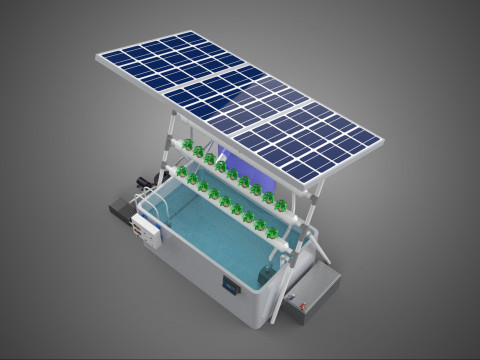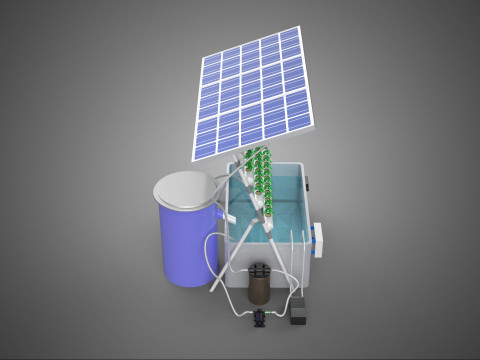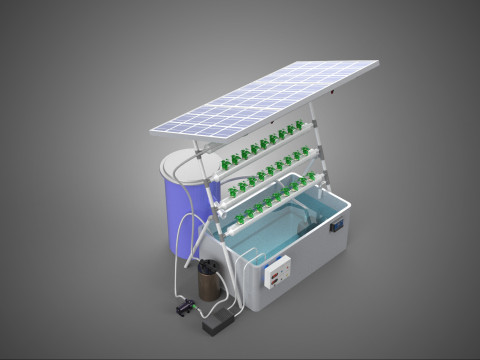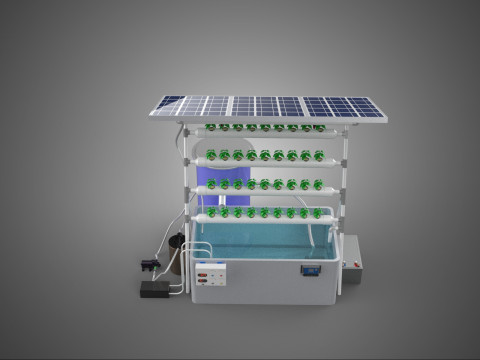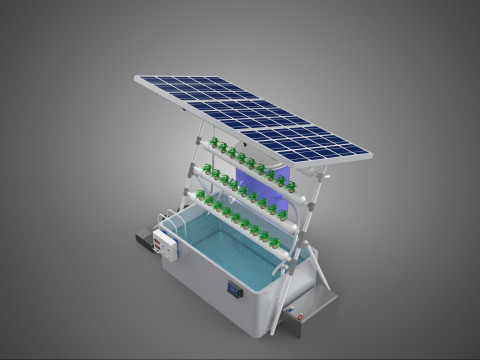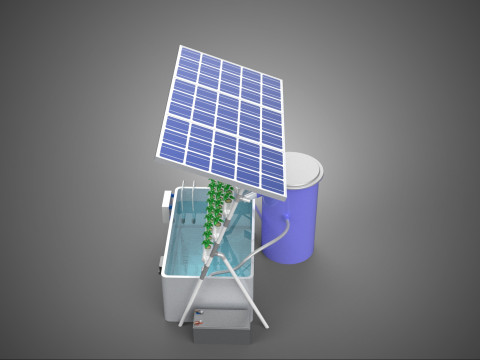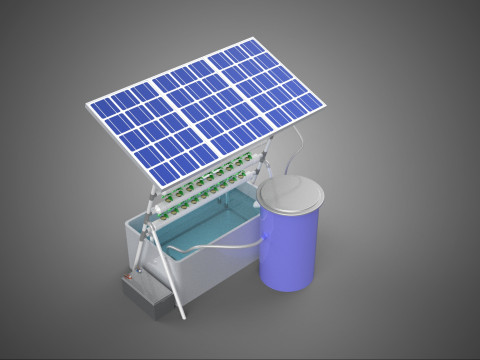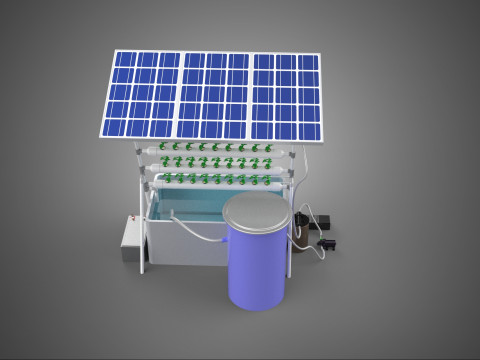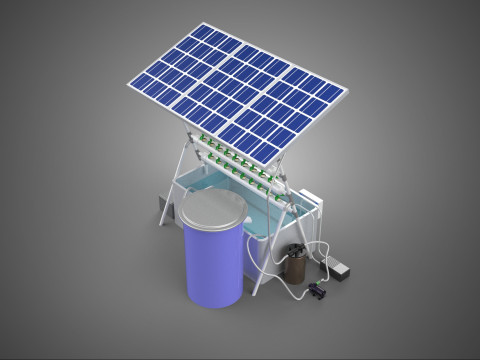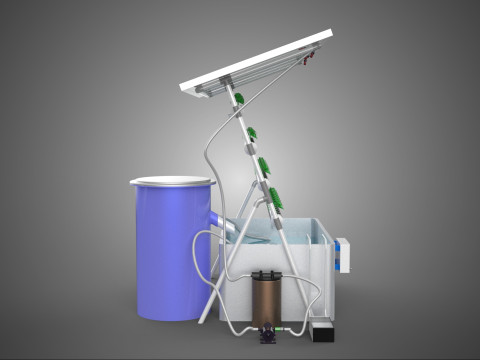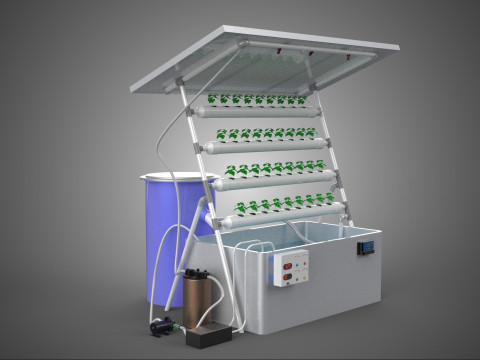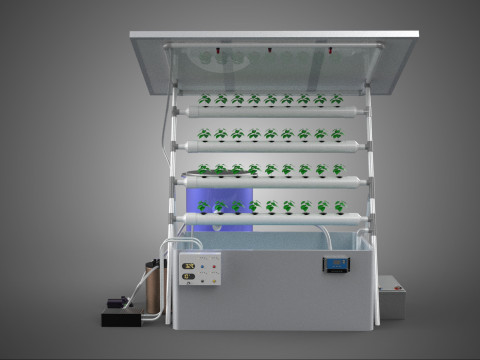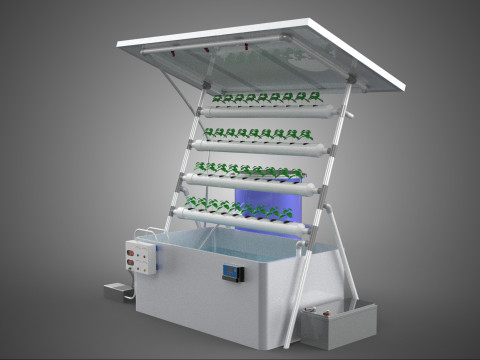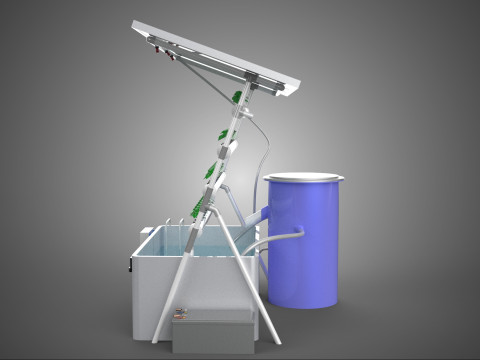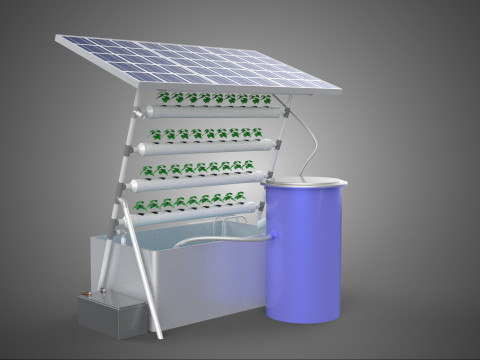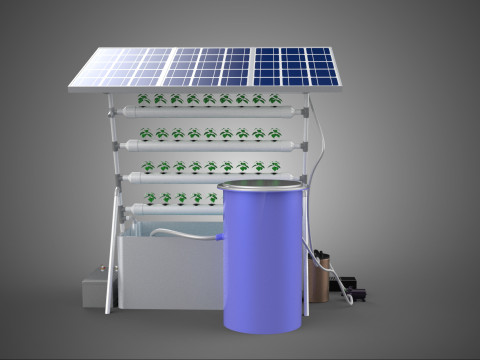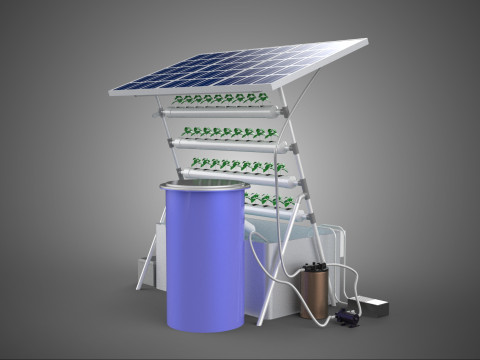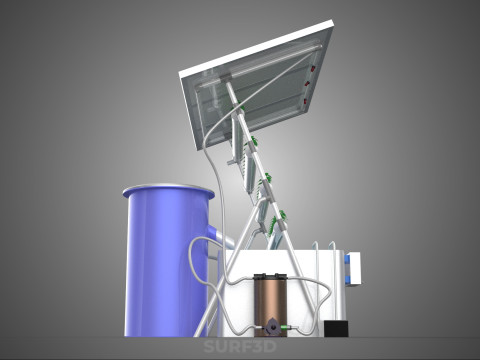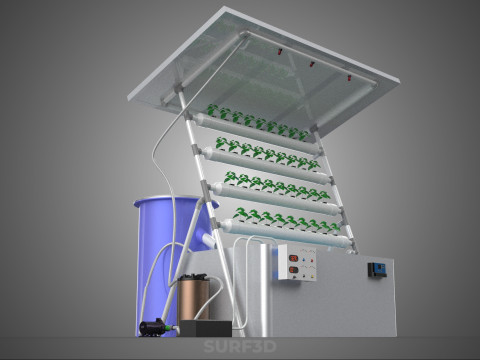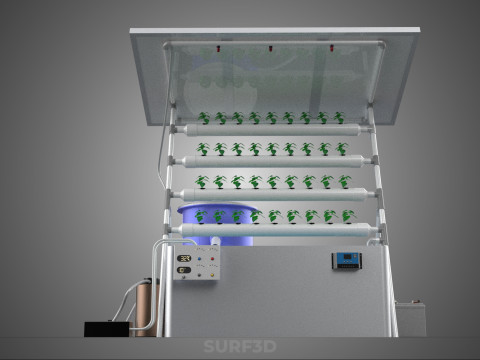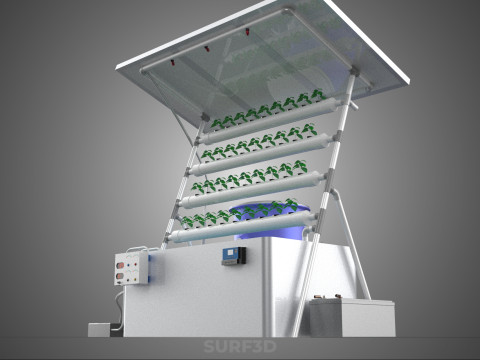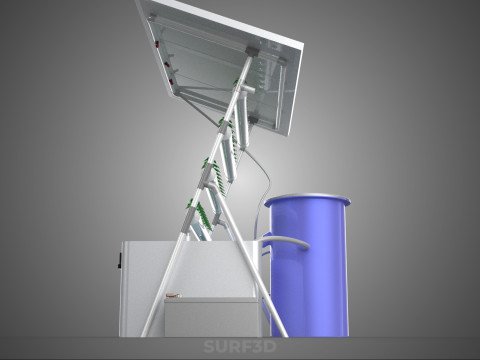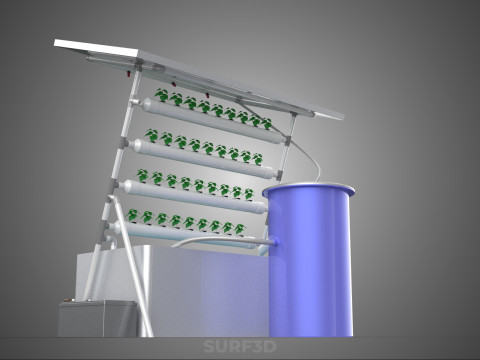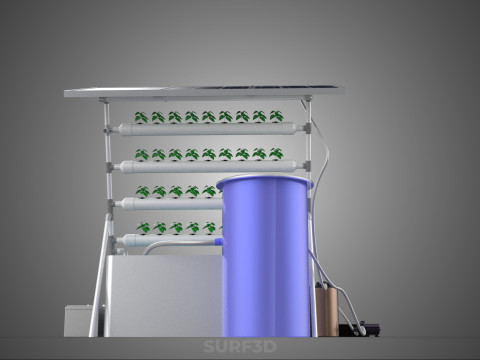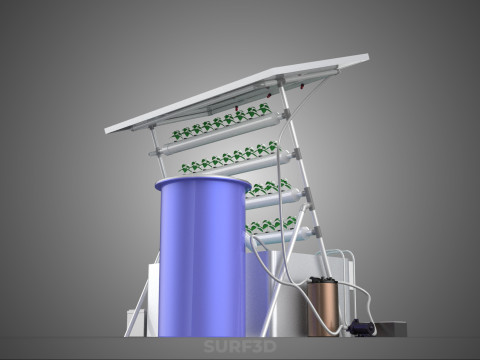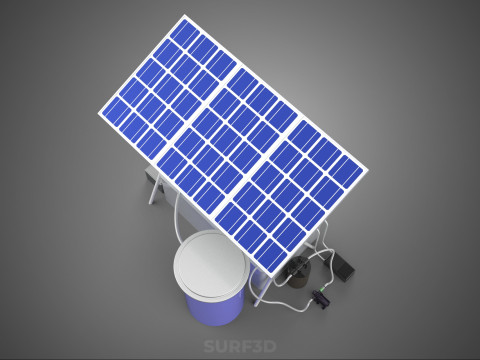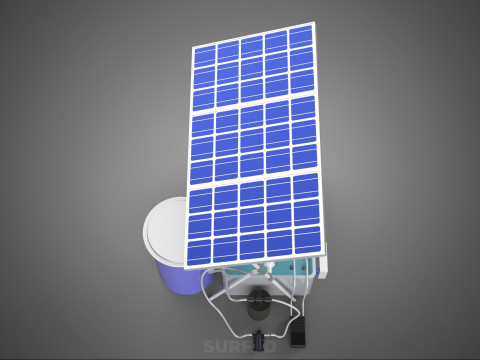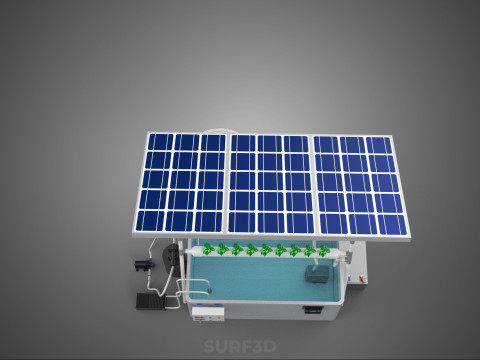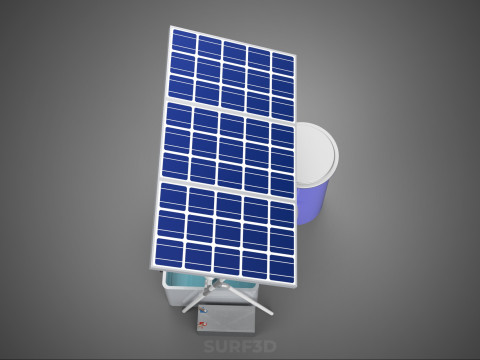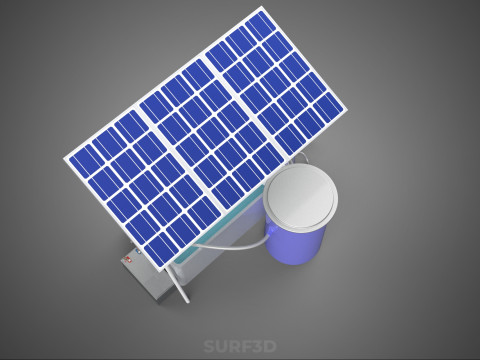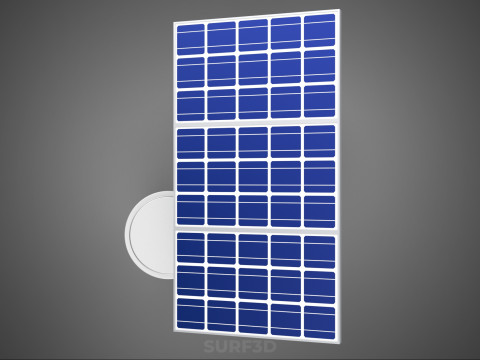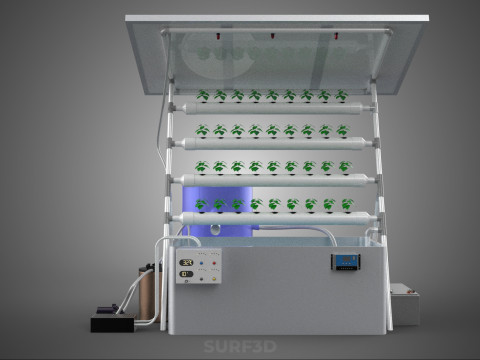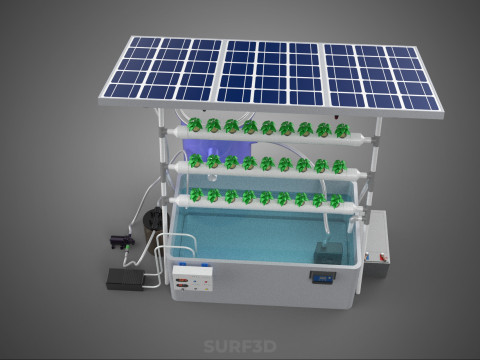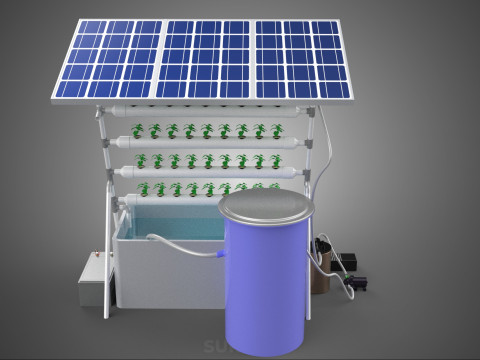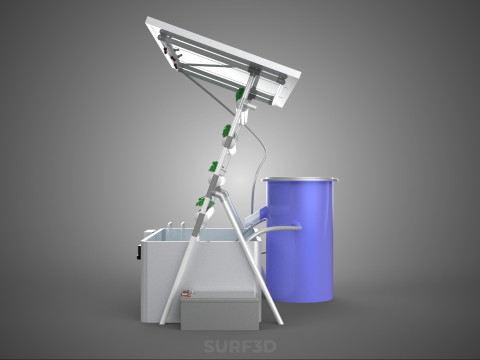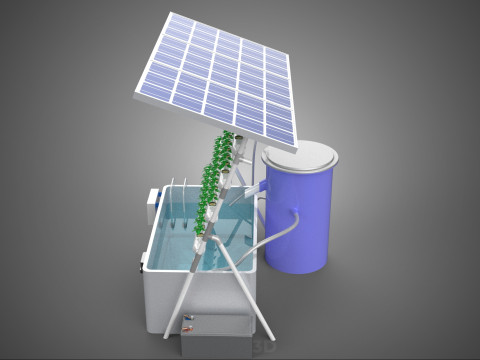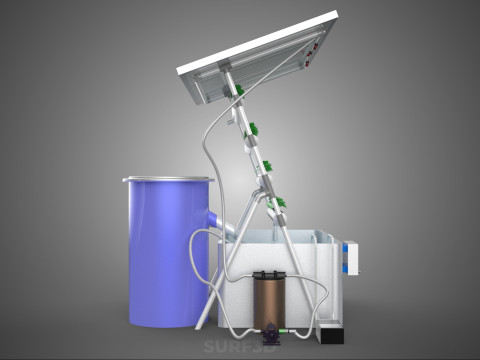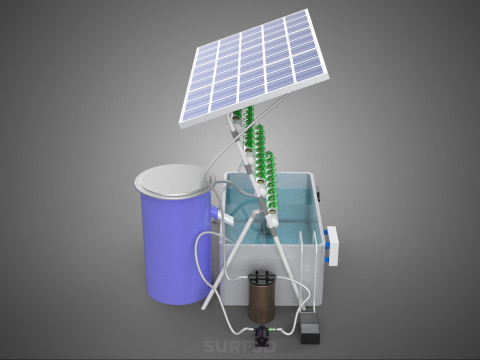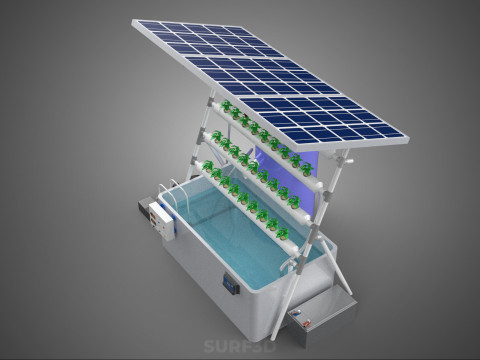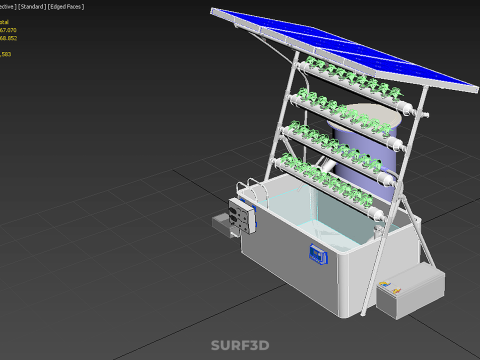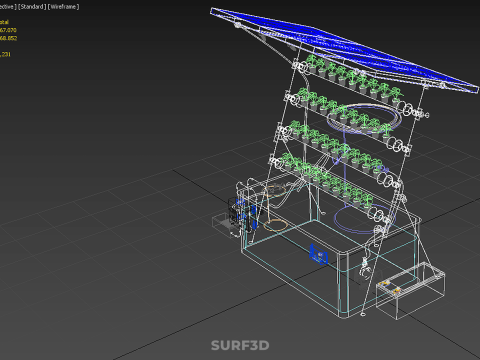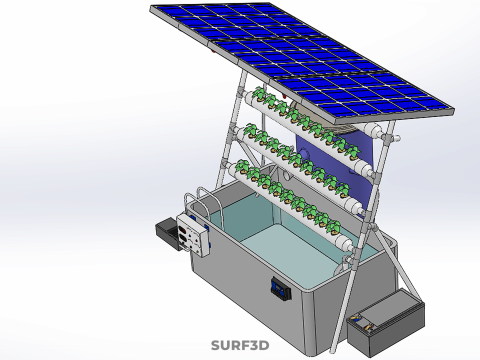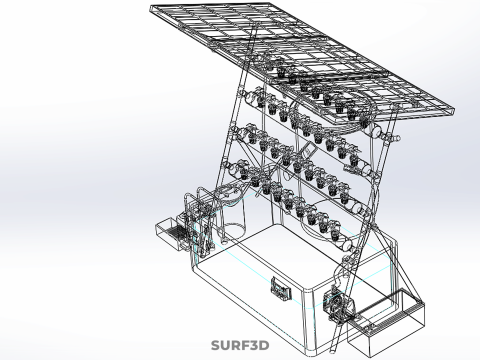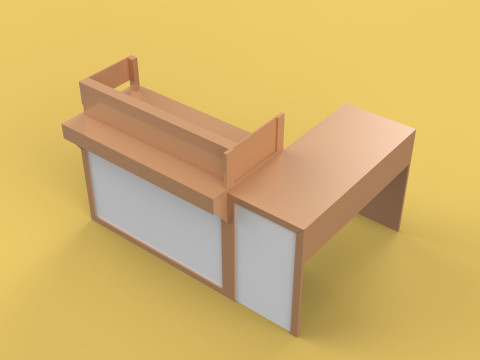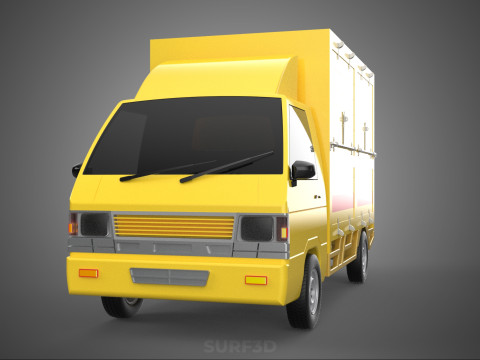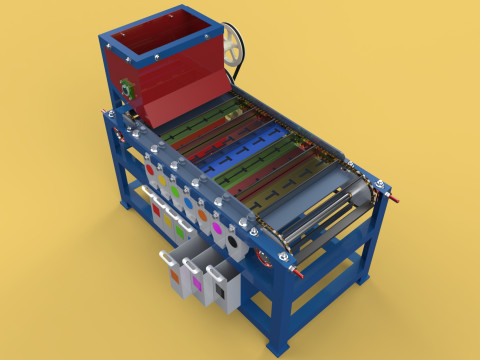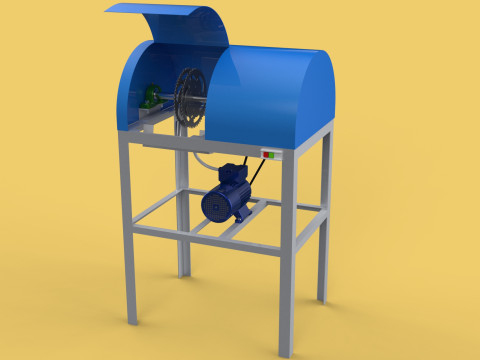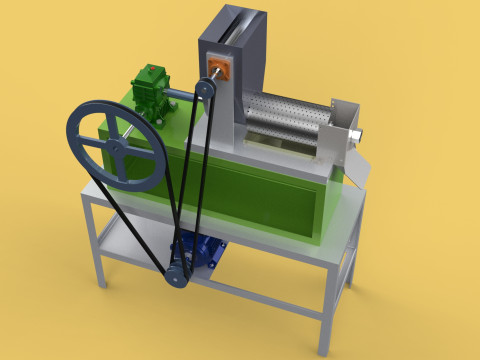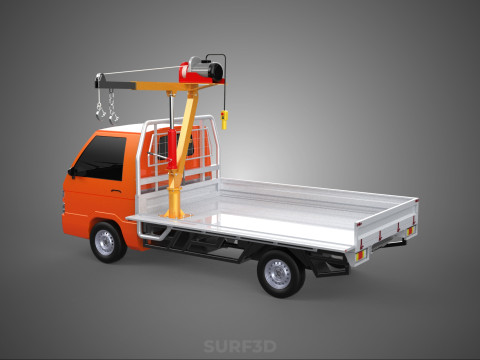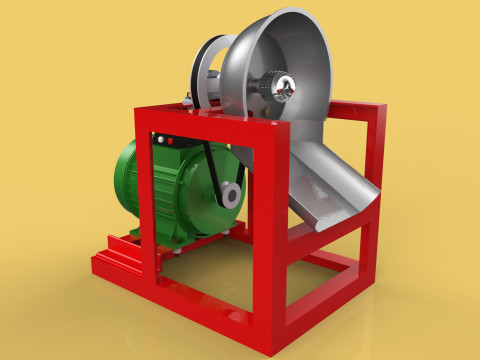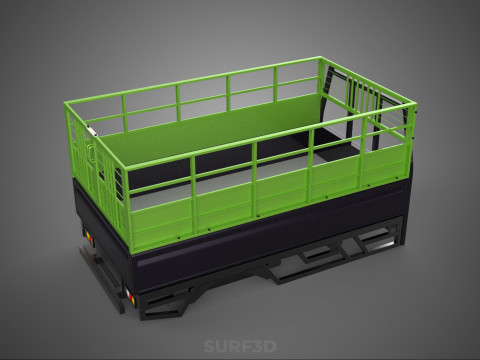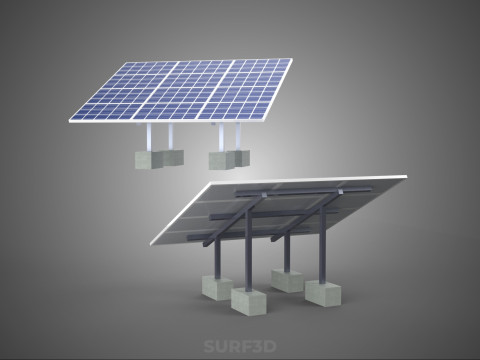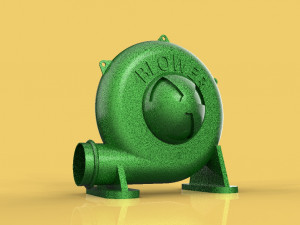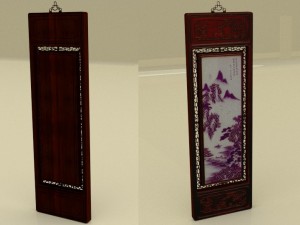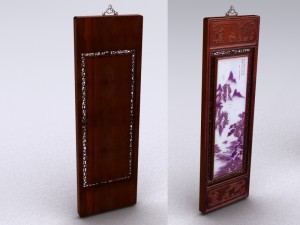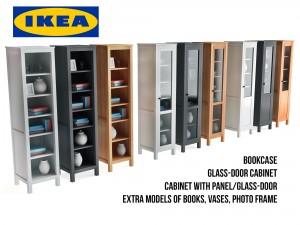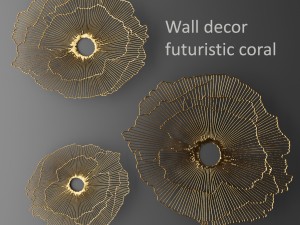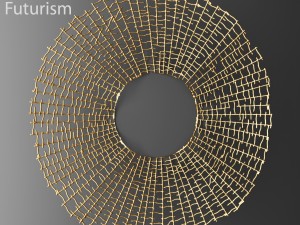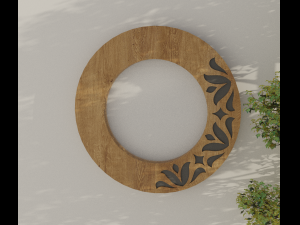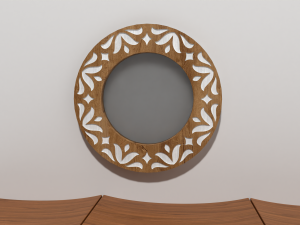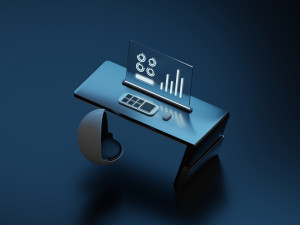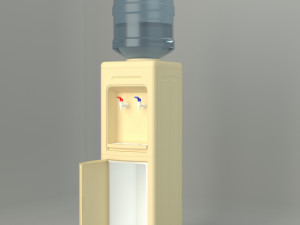SOLAR PANEL POWERED IOT WATER NUTRIENT CONTROL HYDROPONIC PLANT Model 3D
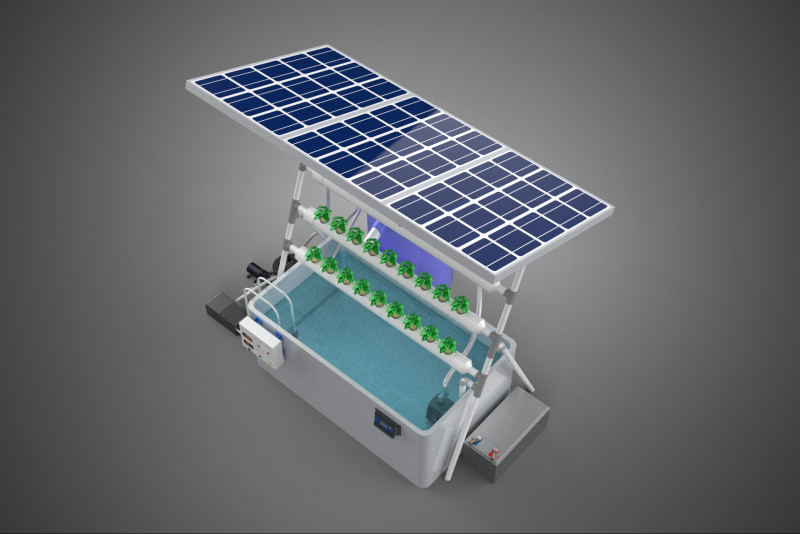
- Format yang tersedia: Blender3D (.blend) 12.31 MBAutodesk FBX (.fbx) 21.56 MBIGES (.iges) 3.91 MBGLB (.glb / .gltf) 6.44 MBACIS(.sat) 10.58 MBAutodesk AutoCAD (.dwg) 6.99 MBCollada (.dae) 10.39 MB3D Studio (.3ds) 4.59 MBWavefront OBJ (.obj) 11.59 MBAutodesk 3DS MAX (.max) 19.88 MBRhinoceros (.3dm) 28.17 MBSketchUp (.skp) 7.85 MBSTEP (.step) 4.35 MBStereolithography (.stl) 13.85 MB
- Poligon:967070
- Sudut:668852
- Animasi:No
- Bertekstur:No
- Dimanipulasi:No
- Material:
- Low-poly:No
- Koleksi:No
- Pemetaan UVW:No
- Plugin Digunakan:No
- Siap Cetak:No
- Pindai 3D:No
- Konten Dewasa:No
- PBR:No
- AI Pelatihan:No
- Geometri:Poly NURBS
- Unwrapped UVs:Unknown
- Tampilan:85
- Tanggal: 2025-09-19
- ID Barang:600157
High-quality 3D assets at affordable prices — trusted by designers, engineers, and creators worldwide. Made with care to be versatile, accessible, and ready for your pipeline.
Included File Formats
This model is provided in 14 widely supported formats, ensuring maximum compatibility:
• - FBX (.fbx) – Standard format for most 3D software and pipelines
• - OBJ + MTL (.obj, .mtl) – Wavefront format, widely used and compatible
• - STL (.stl) – Exported mesh geometry; may be suitable for 3D printing with adjustments
• - STEP (.step, .stp) – CAD format using NURBS surfaces
• - IGES (.iges, .igs) – Common format for CAD/CAM and engineering workflows (NURBS)
• - SAT (.sat) – ACIS solid model format (NURBS)
• - DAE (.dae) – Collada format for 3D applications and animations
• - glTF (.glb) – Modern, lightweight format for web, AR, and real-time engines
• - 3DS (.3ds) – Legacy format with broad software support
• - 3ds Max (.max) – Provided for 3ds Max users
• - Blender (.blend) – Provided for Blender users
• - SketchUp (.skp) – Compatible with all SketchUp versions
• - AutoCAD (.dwg) – Suitable for technical and architectural workflows
• - Rhino (.3dm) – Provided for Rhino users
Model Info
• - All files are checked and tested for integrity and correct content
• - Geometry uses real-world scale; model resolution varies depending on the product (high or low poly)
• • - Scene setup and mesh structure may vary depending on model complexity
• - Rendered using Luxion KeyShot
• - Affordable price with professional detailing
Buy with confidence. Quality and compatibility guaranteed.
If you have any questions about the file formats, feel free to send us a message — we're happy to assist you!
Sincerely,
SURF3D
Trusted source for professional and affordable 3D models.
More Information About 3D Model :
A Solar Panel Powered IoT Water Nutrient Control Hydroponic Plant system represents an integrated, highly automated, and sustainable approach to soilless crop cultivation. This advanced horticultural method combines the principles of hydroponics with sophisticated sensor technology, Internet of Things (IoT) connectivity, and renewable energy to optimize plant growth conditions and resource utilization.
**Hydroponic Core:** At its foundation, the system utilizes hydroponics, a method of growing plants without soil, using mineral nutrient solutions dissolved in water. This technique offers several advantages, including significantly reduced water consumption (up to 90% less than traditional soil farming), faster plant growth rates, higher yields, and the elimination of soil-borne diseases and pests. Plants are typically supported by inert media such as rockwool, coco coir, or clay pebbles, and their roots are directly exposed to the nutrient-rich water.
**Water Nutrient Control System:** Central to the system's efficacy is the precise management of the nutrient solution. Plants require specific concentrations of macronutrients (nitrogen, phosphorus, potassium) and micronutrients (iron, manganese, zinc, etc.), as well as an optimal pH level and electrical conductivity (EC) or total dissolved solids (TDS) to absorb these nutrients efficiently. The control system continuously monitors critical parameters within the nutrient reservoir using specialized sensors:
* **pH Sensor:** Measures the acidity or alkalinity of the solution, which directly affects nutrient availability.
* **EC/TDS Sensor:** Gauges the concentration of dissolved mineral salts, indicating the overall nutrient strength.
* **Water Level Sensor:** Monitors the volume of the nutrient solution, signaling when replenishment is needed.
* **Temperature Sensor:** Measures solution temperature, crucial for root health and nutrient uptake.
Automatic dosing pumps, controlled by a central microcontroller, are then activated to precisely adjust pH (using acid or base solutions) and nutrient concentrations (by adding concentrated nutrient solutions) based on predefined optimal ranges and real-time sensor data.
**Internet of Things (IoT) Integration:** The "IoT" component elevates the system's functionality through remote monitoring, control, and data analytics. Sensors transmit their readings to an embedded microcontroller (e.g., ESP32, Raspberry Pi). This microcontroller processes the data, executes local control logic for nutrient adjustments, and subsequently uploads the information to a cloud-based platform via wireless communication protocols such as Wi-Fi, LoRaWAN, or cellular networks. Users can access a dashboard via a web application or mobile app to view real-time data on pH, EC, water levels, temperature, and even environmental factors like ******t light and humidity (if additional sensors are integrated). Furthermore, the IoT integration enables remote control capabilities, allowing users to modify set points, trigger dosing events, or receive alerts for critical deviations, thereby facilitating proactive management and troubleshooting from any internet-connected location.
**Solar Panel Power Source:** To ensure energy autonomy and environmental sustainability, the entire system is powered by solar energy. Photovoltaic (PV) panels convert sunlight directly into electrical energy. This energy is then routed through a charge controller to charge a battery bank, which stores the power for continuous operation, particularly during periods of low sunlight or at night. The battery bank subsequently supplies reliable DC power to all active components, including sensors, microcontrollers, pumps, and communication modules. This renewable energy integration renders the system suitable for off-grid applications, remote agricultural sites, or urban environments seeking to minimize their carbon footprint and reduce reliance on conventional power grids, thereby lowering operational costs.
**Integrated Operation and Benefits:** The synergy of these components results in a highly efficient and adaptable plant cultivation system. Real-time data collection coupled with automated nutrient delivery ensures plants receive optimal conditions for growth, leading to enhanced yields and product quality. The solar power supply provides energy independence, reducing variable electricity costs and promoting ecological sustainability. Remote monitoring and control through IoT minimize manual labor, allow for predictive maintenance, and offer unparalleled flexibility in managing multiple systems across diverse locations. Such systems are particularly beneficial for urban farming initiatives, research facilities requiring precise environmental control, and areas with limited access to arable land or reliable power infrastructure.
**Conclusion:** The Solar Panel Powered IoT Water Nutrient Control Hydroponic Plant represents a paradigm shift towards precision agriculture and sustainable food production. By combining advanced hydroponic techniques with smart automation and renewable energy, these systems offer a robust, resource-efficient, and environmentally friendly solution for cultivating crops, paving the way for more resilient and localized food systems.
KEYWORDS: Hydroponics, IoT, Solar Power, Nutrient Control, Precision Agriculture, Sustainable Farming, Automation, Sensors, Remote Monitoring, Smart Farming, Off-grid, Renewable Energy, Water Efficiency, Plant Growth, pH Management, EC Measurement, Data Analytics, Cloud Computing, Urban Farming, Controlled Environment Agriculture, Dosing Systems, Photovoltaic, Microcontroller, Wireless Communication, Resource Optimization, Crop Yield, Environmental Sustainability, Soil-less Cultivation, Battery Storage, Energy Independence
Jika Anda membutuhkan format yang berbeda, silakan buka Tiket Dukungan baru dan minta itu. Kita dapat mengonversi model 3D menjadi: .stl, .c4d, .obj, .fbx, .ma/.mb, .3ds, .3dm, .dxf/.dwg, .max. .blend, .skp, .glb. Kami tidak mengonversi adegan 3d dan format seperti .step, .iges, .stp, .sldprt.!


 English
English Español
Español Deutsch
Deutsch 日本語
日本語 Polska
Polska Français
Français 中國
中國 한국의
한국의 Українська
Українська Italiano
Italiano Nederlands
Nederlands Türkçe
Türkçe Português
Português Bahasa Indonesia
Bahasa Indonesia Русский
Русский हिंदी
हिंदी